Here are some science questions from the Standards for Grades 2-5 to help you test your knowledge of the Next Generation Sunshine State Standards.
The questions are chosen randomly, so this quest will be different each time you reload the page.
* Click here to see only the most recently added questions.
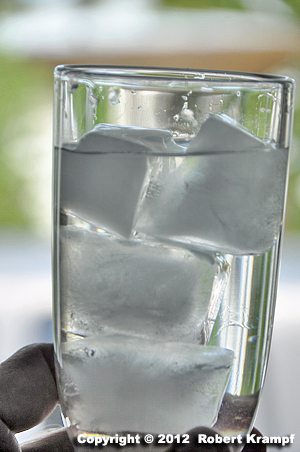
When water freezes, it:
-
Condenses
No. Condensation happens when water vapor changes from a gas to a liquid. -
Contracts
No. Water does not take up less space when it freezes. -
Expands
Yes! Unlike most substances, water expands to take up more space when it freezes. -
Gains mass.
No. Changing from one state to another does not cause a change in mass.
Click to see which state standards this question tests, and which of my videos, experiments, and other resources support that topic.
Florida
SC.3.P.9.1 Describe the changes water undergoes when it changes state through heating and cooling by using familiar scientific terms such as melting, freezing, boiling, evaporation, and condensation.
| Why We Sweat | video, checked |
| Photographing Snowflakes | video, checked |
| Ice Cream Science | video, checked |
| Cloud Formation, part 1 | video, ClosedCaptions, checked |
| The Water Cycle | video, checked |
| A Model of the Water Cycle | video, ClosedCaptions, checked |
| Cloud Formation, part 2 | video |
| Making a Solar Still | video |
| Wonderful Water | video, checked |
| A Watched Pot | video |
| What Really Happens With Evaporation? | text page, free, checked |
| Review Weather-1 | practice |
| Review Weather-2 | practice |
| Review Weather-10 | practice |
SC.4.P.8.2 Identify properties and common uses of water in each of its states.
| Water on a String | video, blog, ClosedCaptions |
| Wonderful Water | video, checked |
| A Watched Pot | video |
| Wax and Wood, part 1 | video, checked |
| Wax and Wood, part 2 | video, checked |
| Photographing Snowflakes | video, checked |
| Ice Cream Science | video, checked |
| 75% Water | video, checked |
| Crushed Can | video, checked |
| A Boat Full of Holes | video, checked |
| A Bouncing Water Balloon | video |
| Cloud Types | video |
| Making a Solar Still | video |
| A Clean Trick | text page |
| Adding to a Full Cup | text page |
| What Really Happens With Evaporation? | text page, free, checked |
| Review Weather-8 | practice |
| Review Weather-10 | practice |
SC.5.E.7.1 Create a model to explain the parts of the water cycle. Water can be a gas, a liquid, or a solid and can go back and forth from one state to another.
>>> Teacher Page: Water Cycle
| The Water Cycle | video, checked |
| A Model of the Water Cycle | video, ClosedCaptions, checked |
| Cloud Formation, part 2 | video |
| Cloud Types | video |
| Making a Solar Still | video |
| A Watched Pot | video |
| Photographing Snowflakes | video, checked |
| Review Weather-1 | practice |
| Review Weather-2 | practice |
| Review Weather-8 | practice |
| Review Weather-10 | practice |
SC.5.P.8.1 Compare and contrast the basic properties of solids, liquids, and gases, such as mass, volume, color, texture, and temperature.
>>> Teacher Page: States of Matter
| A Bouncing Water Balloon | video |
| Egg States | video, checked |
| Experimenting with Dry Ice | video, free, checked |
| Wax and Wood, part 1 | video, checked |
| Wax and Wood, part 2 | video, checked |
| Ice Cream Science | video, checked |
| Raw Egg or Boiled? | video, checked |
| Air Space | video |
| Air has Weight | text page |
| Teach It Right the First Time. | text page, free |
| Review Matter-2 | practice |
| Review Matter-1 | practice |
| Review Matter-3 | practice |
| Review Weather-10 | practice |
SC.6.E.7.2 Investigate and apply how the cycling of water between the atmosphere and hydrosphere has an effect on weather patterns and climate.
| The Water Cycle | video, checked |
| Weather and Climate | video |
| Cloud Types | video |
| Nephoscope | video, checked |
| Pine Cone Weather | text page, free |
| Review Weather-8 | practice |
| Review Weather-9 | practice |
| Review Weather-10 | practice |
Utah
UT.4.I.2.b Describe the processes of evaporation, condensation, and precipitation as they relate to the water cycle.
| Cloud Formation, part 1 | video, ClosedCaptions, checked |
| The Water Cycle | video, checked |
| A Model of the Water Cycle | video, ClosedCaptions, checked |
| Making a Solar Still | video |
| Wonderful Water | video, checked |
| A Watched Pot | video |
| Photographing Snowflakes | video, checked |
| A Cool Experiment | text page |
| What Really Happens With Evaporation? | text page, free, checked |
| Review Weather-8 | practice |
| Review Weather-10 | practice |
UT.4.I.2.c Identify locations that hold water as it passes through the water cycle (e.g., oceans, atmosphere, fresh surface water, snow, ice, and ground water).
| 75% Water | video, checked |
| Photographing Snowflakes | video, checked |
| A Model of the Water Cycle | video, ClosedCaptions, checked |
| Review Weather-8 | practice |
| Review Weather-10 | practice |
NGSS
MS-ESS2-4 Develop a model to describe the cycling of water through Earth’s systems driven by energy from the sun and the force of gravity.
| The Water Cycle | video, checked |
| A Model of the Water Cycle | video, ClosedCaptions, checked |
| Cloud Formation, part 2 | video |
| Making a Solar Still | video |
| Wonderful Water | video, checked |
| Cloud Formation, part 1 | video, ClosedCaptions, checked |
| Review Weather-8 | practice |
| Review Weather-10 | practice |
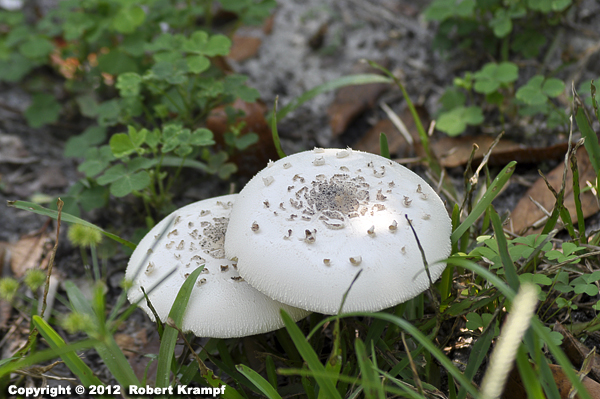
Which part of the food web does this mushroom fit into?
-
Producer.
No. A producer captures energy from sunlight, and stores it as food. To do that, the organism needs to contain chlorophyll. This mushroom cannot use the energy of sunlight to produce its own food. -
Primary Consumer.
No. Primary consumers eat producers. This mushroom does not eat living plants. -
Secondary Consumer
No. Secondary consumers eat other consumers. This mushroom does not eat living animals. -
Decomposer
Yes! Decomposers break down dead and decaying organisms. This mushroom gets its energy from decaying organisms in the soil.
Click to see which state standards this question tests, and which of my videos, experiments, and other resources support that topic.
Florida
SC.4.L.17.3 Trace the flow of energy from the Sun as it is transferred along the food chain through the producers to the consumers.
| Scavengers and Decomposers | video, free, ClosedCaptions, Updated |
| Secondary Consumers | video, free, ClosedCaptions, Updated, checked |
| Producers | video, free, Updated, checked |
| Primary Consumers | video, ClosedCaptions, Updated, checked |
| Food Web Tag | text page |
| What is a Food Web? | text page, free, checked |
| Review Food Web-5 | practice |
| Review Food Web-6 | practice |
| Review Food Web-7 | practice |
| Review Food Web-8 | practice |
| Review Food Web-9 | practice |
| Review Food Web-10 | practice |
| Review Food Web-2 | practice |
| Review Food Web-1 | practice |
| Review Food Web-3 | practice |
| Review Food Web-4 | practice |
SC.7.L.17.1 Explain and illustrate the roles of and relationships among producers, consumers, and decomposers in the process of energy transfer in a food web.
| Secondary Consumers | video, free, ClosedCaptions, Updated, checked |
| Producers | video, free, Updated, checked |
| Primary Consumers | video, ClosedCaptions, Updated, checked |
| Measuring Calories | video, ClosedCaptions, checked |
| Scavengers and Decomposers | video, free, ClosedCaptions, Updated |
| What is a Food Web? | text page, free, checked |
| Food Web Tag | text page |
| Review Food Web-2 | practice |
| Review Food Web-1 | practice |
| Review Food Web-3 | practice |
| Review Food Web-4 | practice |
| Review Food Web-5 | practice |
| Review Food Web-6 | practice |
| Review Food Web-7 | practice |
| Review Food Web-8 | practice |
| Review Food Web-9 | practice |
| Review Food Web-10 | practice |
Utah
UT.8.II.2.a Categorize the relationships between organisms (i.e., producer/consumer/decomposer, predator/prey, mutualism/parasitism) and provide examples of each.
| Secondary Consumers | video, free, ClosedCaptions, Updated, checked |
| Producers | video, free, Updated, checked |
| Primary Consumers | video, ClosedCaptions, Updated, checked |
| What is a Food Web? | text page, free, checked |
| Review Food Web-10 | practice |
| Review Food Web-11 | practice |
| Review Food Web-12 | practice |
| Review Food Web-2 | practice |
| Review Food Web-1 | practice |
| Review Food Web-3 | practice |
| Review Food Web-4 | practice |
| Review Food Web-5 | practice |
| Review Food Web-6 | practice |
| Review Food Web-7 | practice |
| Review Food Web-8 | practice |
| Review Food Web-9 | practice |
NGSS
5-PS3-1 Use models to describe that energy in animals’ food (used for body repair, growth, motion, and to maintain body warmth) was once energy from the sun.
| Measuring Calories | video, ClosedCaptions, checked |
| Scavengers and Decomposers | video, free, ClosedCaptions, Updated |
| Secondary Consumers | video, free, ClosedCaptions, Updated, checked |
| Producers | video, free, Updated, checked |
| Measuring Photosynthesis | video, checked |
| Primary Consumers | video, ClosedCaptions, Updated, checked |
| Calories: Measuring the Energy | text page, free |
| What is a Food Web? | text page, free, checked |
| Review Food Web-1 | practice |
| Review Food Web-3 | practice |
| Review Food Web-4 | practice |
| Review Food Web-5 | practice |
| Review Food Web-6 | practice |
| Review Food Web-7 | practice |
| Review Food Web-8 | practice |
| Review Food Web-9 | practice |
| Review Food Web-10 | practice |
| Review Food Web-2 | practice |
5-LS2-1 Develop a model to describe the movement of matter among plants, animals, decomposers, and the environment.
| Scavengers and Decomposers | video, free, ClosedCaptions, Updated |
| Secondary Consumers | video, free, ClosedCaptions, Updated, checked |
| Producers | video, free, Updated, checked |
| Primary Consumers | video, ClosedCaptions, Updated, checked |
| What is a Food Web? | text page, free, checked |
| Review Food Web-6 | practice |
| Review Food Web-7 | practice |
| Review Food Web-8 | practice |
| Review Food Web-9 | practice |
| Review Food Web-10 | practice |
| Review Food Web-2 | practice |
| Review Food Web-1 | practice |
| Review Food Web-3 | practice |
| Review Food Web-4 | practice |
| Review Food Web-5 | practice |
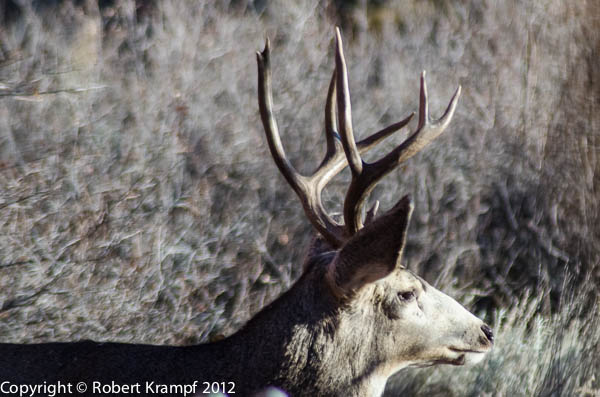
Notice that the very back point on this Mule Deer's antlers is split. This is a genetic trait which is becoming more and more common because hunters would rather shoot deer with perfect antlers. This is an example of:
-
why hunting deer is a bad idea.
No. Actually, deer hunting is very important. Because we have killed off many of their natural predators, if hunters did not control their population, large numbers of them would starve to death. -
an adaptation that improves an organism's chance for survival.
Yes. Because hunters are less likely to shoot it, this deer is more likely to survive long enough to reproduce, passing this trait on to its offspring. -
an acquired trait.
No. This is a genetic trait, not an acquired trait. -
why antlers are more useful than horns.
No. Antlers and horns serve different functions, but both are useful to the animal that has them.
Click to see which state standards this question tests, and which of my videos, experiments, and other resources support that topic.
Florida
SC.5.L.15.1 Describe how, when the environment changes, differences between individuals allow some plants and animals to survive and reproduce while others die or move to new locations.
| Who Evolved on First? | text page, free, checked |
| Review Adaptation-6 | practice |
| Review Adaptation-1 | practice |
| Review Adaptation-5 | practice |
SC.7.L.15.2 Explore the scientific theory of evolution by recognizing and explaining ways in which genetic variation and environmental factors contribute to evolution by natural selection and diversity of organisms.
| Who Evolved on First? | text page, free, checked |
| Review Adaptation-1 | practice |
Utah
UT.5.V.2.c Describe how a particular physical attribute may provide an advantage for survival in one environment but not in another (e.g., heavy fur in arctic climates keep animals warm whereas in hot desert climates it would cause overheating; flippers on such animals as sea lions and seals provide excellent swimming structures in the water but become clumsy and awkward on land; cacti retain the right amount of water in arid regions but would develop root rot in a more temperate region; fish gills have the ability to absorb oxygen in water but not on land).
| Review Adaptation-1 | practice |
| Review Adaptation-5 | practice |
| Review Adaptation-6 | practice |
UT.7.IV.2.a Predict why certain traits (e.g., structure of teeth, body structure, coloration) are more likely to offer an advantage for survival of an organism.
| Onion Crystals | video |
| Selective Smelling | video, checked |
| Thoughts on an Exoskeleton | text page, free |
| Who Evolved on First? | text page, free, checked |
| Review Adaptation-1 | practice |
| Review Adaptation-2 | practice |
| Review Adaptation-5 | practice |
| Review Adaptation-6 | practice |
NGSS
3-LS4-2 Use evidence to construct an explanation for how the variations in characteristics among individuals of the same species may provide advantages in surviving, finding mates, and reproducing.
| Flowers | video, ClosedCaptions |
| Who Evolved on First? | text page, free, checked |
| Review Adaptation-4 | practice |
| Review Adaptation-5 | practice |
| Review Adaptation-6 | practice |
| Review Adaptation-1 | practice |
| Review Adaptation-3 | practice |
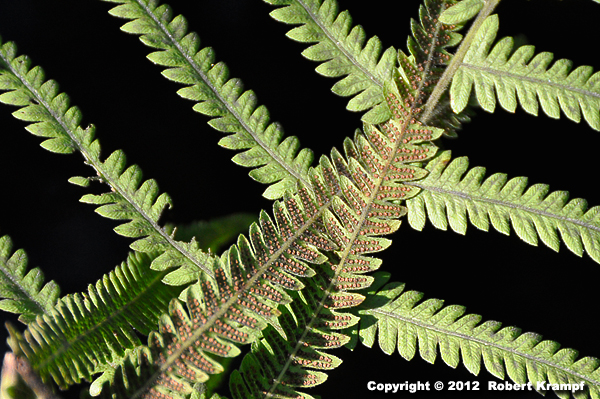
The brown spots on this fern contain spores. How are spores different from seeds?
-
Spores are much smaller, because they do not contain stored food for the young plant.
That is part of the answer. Most seeds contain stored food for the developing plant. Orchid seeds are an exception.. -
Spores are a form of asexual reproduction.
That is part of the answer. Spores contain only the genetic material from the parent plant. -
Spores develop into a different kind of plant from the parent.
This is part of the answer. Ferns have alternation of generations, which means that the spores grow into a plant called a prothallia. The prothallia produces male and female sex cells, which join, and grow into another fern plant. -
All of the above.
Yes! All three of the answers are correct.
Click to see which state standards this question tests, and which of my videos, experiments, and other resources support that topic.
Florida
SC.3.L.15.2 Classify flowering and nonflowering plants into major groups such as those that produce seeds, or those like ferns and mosses that produce spores, according to their physical characteristics.
| Pumpkin Guts | video, free, ClosedCaptions, checked |
| Seed Search | video, ClosedCaptions, checked |
| Review Plants-4 | practice |
| Review Plants-8 | practice |
SC.4.L.16.4 Compare and contrast the major stages in the life cycles of Florida plants and animals, such as those that undergo incomplete and complete metamorphosis, and flowering and nonflowering seedbearing
plants.
| Orange Slices | video, ClosedCaptions |
| Creating a Sprout Guide | text page, photography, free |
| Review Life Cycle-1 | practice |
| Review Life Cycle-2 | practice |
| Review Plants-4 | practice |
| Review Life Cycle-3 | practice |
| Review Life Cycle-4 | practice |
Utah
UT.5.V.1.e Investigate variations and similarities in plants grown from seeds of a parent plant (e.g., how seeds from the same plant species can produce different colored flowers or identical flowers).
| Review Plants-4 | practice |
UT.7.IV.1.c Cite examples of organisms that reproduce sexually (e.g., rats, mosquitoes, salmon, sunflowers) and those that reproduce asexually (e.g., hydra, planaria, bacteria, fungi, cuttings from house plants).
| Pumpkin Guts | video, free, ClosedCaptions, checked |
| Review Plants-4 | practice |
NGSS
MS-LS1-4 Use argument based on empirical evidence and scientific reasoning to support an explanation for how characteristic animal behaviors and specialized plant structures affect the probability of successful reproduction of animals and plants respectively.
| Calling a Woodpecker | video, checked |
| Selective Smelling | video, checked |
| Pumpkin Guts | video, free, ClosedCaptions, checked |
| Seed Search | video, ClosedCaptions, checked |
| Orange Slices | video, ClosedCaptions |
| Bacteria and Antibiotics | video, ClosedCaptions |
| Flowers | video, ClosedCaptions |
| Onion Crystals | video |
| A Walk in the Park | video, checked |
| Nature Watching | video, checked |
| Thoughts on an Exoskeleton | text page, free |
| How Does a Butterfly Fly? | text page, free |
| Review Adaptation-3 | practice |
| Review Plants-2 | practice |
| Review Plants-4 | practice |
| Review Adaptation-4 | practice |
| Review Adaptation-5 | practice |
| Review Adaptation-6 | practice |
| Review Plants-8 | practice |
MS-LS3-2 Develop and use a model to describe why asexual reproduction results in offspring with identical genetic information and sexual reproduction results in offspring with genetic variation.
| Extracting Your Own DNA | video |
| Review Plants-3 | practice |
| Review Plants-4 | practice |
MS-LS3-2 Develop and use a model to describe why asexual reproduction results in offspring with identical genetic information and sexual reproduction results in offspring with genetic variation.
| Extracting Your Own DNA | video |
| Review Plants-3 | practice |
| Review Plants-4 | practice |
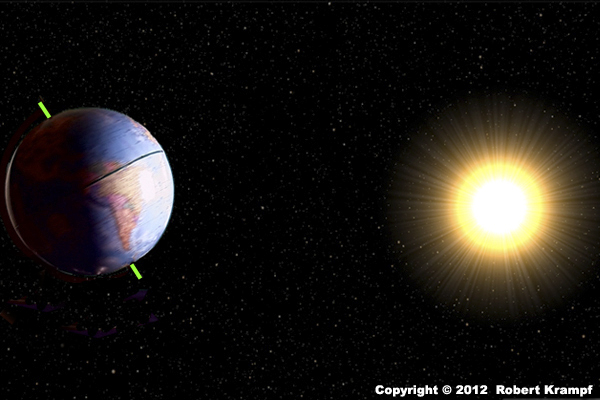
What season is Australia having in this graphic?
-
Spring
No. In the spring, the Earth's axis would not be tilted towards or away from the Sun. -
Summer
Yes! Australia is in the southern hemisphere, which is tilted towards the Sun. That tells us that it is summer there. -
Autumn
No. In the autumn, the Earth's axis would not be tilted towards or away from the Sun. -
Winter
No. Australia is in the southern hemisphere. If it was having winter, then the southern hemisphere would be tilted away from the Sun.
Click to see which state standards this question tests, and which of my videos, experiments, and other resources support that topic.
Florida
SC.4.E.5.1 Observe that the patterns of stars in the sky stay the same although they appear to shift across the sky nightly, and different stars can be seen in different seasons.
| Global Science | video, ClosedCaptions |
| Review Space-5 | practice |
| Review Space-8 | practice |
| Review Space-12 | practice |
SC.8.E.5.9 Explain the impact of objects in space on each other including: 1. the Sun on the Earth including seasons and gravitational attraction 2. the Moon on the Earth, including phases, tides, and eclipses, and the relative position of each body.
| Global Science | video, ClosedCaptions |
| Why is a Full Moon So Bright? | text page, free, checked |
| Review Space-13 | quest |
| Review Space-12 | practice |
Utah
UT.6.II.2.e Use a model to explain why the seasons are reversed in the Northern and Southern Hemispheres.
| Global Science | video, ClosedCaptions |
| Review Space-5 | practice |
| Review Space-8 | practice |
| Review Space-12 | practice |
NGSS
5-ESS1-2 Represent data in graphical displays to reveal patterns of daily changes in length and direction of shadows, day and night, and the seasonal appearance of some stars in the night sky.
| Global Science | video, ClosedCaptions |
| Finding Your Way | video, checked |
| Review Space-8 | practice |
| Review Space-12 | practice |
| Review Space-5 | practice |
MS-ESS1-1 Develop and use a model of the Earth-sun-moon system to describe the cyclic patterns of lunar phases, eclipses of the sun and moon, and seasons.
| Global Science | video, ClosedCaptions |
| Why is a Full Moon So Bright? | text page, free, checked |
| Review Space-6 | practice |
| Review Space-7 | practice |
| Review Space-9 | practice |
| Review Space-12 | practice |
